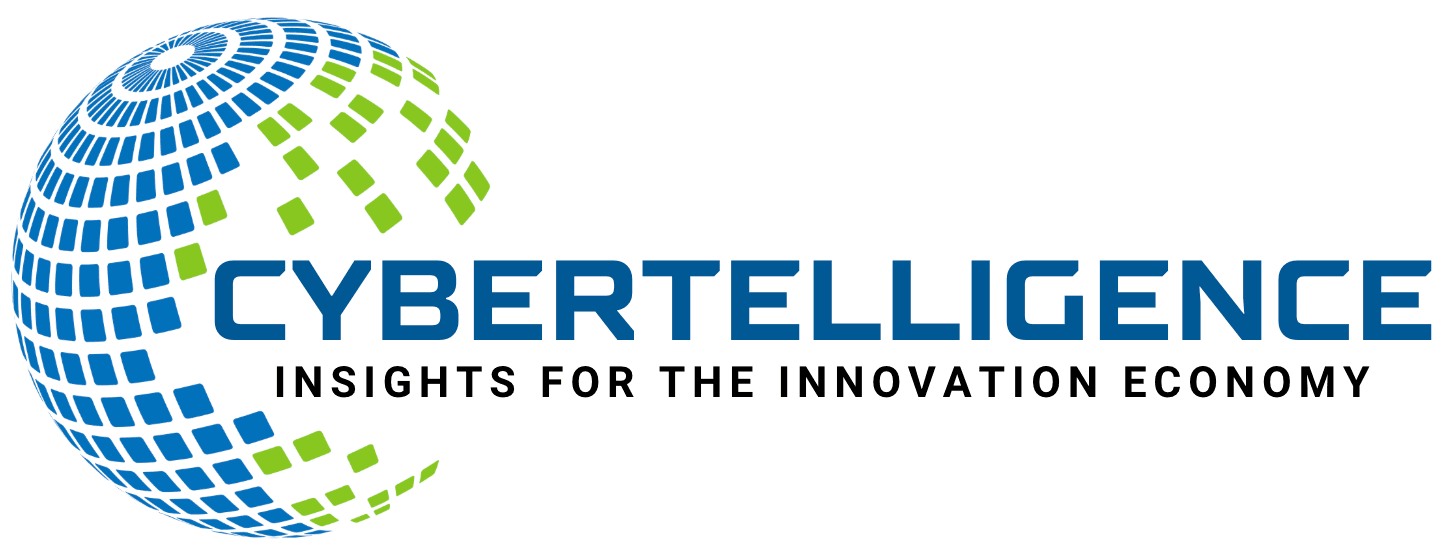Text classification is a fundamental task in the field of natural language processing (NLP) that involves categorizing text into predefined groups or classes. As you delve into this fascinating area, you will discover that it plays a crucial role in various applications, from spam detection in emails to sentiment analysis in social media. The process of text classification allows machines to understand and interpret human language, enabling them to make decisions based on the content of the text.
This capability is increasingly important in our data-driven world, where vast amounts of unstructured text data are generated every day. As you explore text classification, you will encounter various methodologies and algorithms that can be employed to achieve accurate results. The evolution of machine learning and deep learning techniques has significantly enhanced the effectiveness of text classification systems.
By leveraging these advancements, you can build models that not only classify text with high precision but also adapt to new data and changing contexts. Understanding the principles behind text classification will empower you to harness its potential in diverse fields, including marketing, healthcare, and customer service.
Key Takeaways
- Text classification is the process of categorizing text into predefined categories or classes based on its content.
- Text classification is important for organizing and managing large volumes of text data, enabling efficient information retrieval and analysis.
- Types of text classification include binary classification, multi-class classification, and multi-label classification.
- Understanding the text classification process involves data preprocessing, feature extraction, model training, and evaluation.
- Techniques for text classification include Naive Bayes, Support Vector Machines, and deep learning approaches like Convolutional Neural Networks.
Importance of Text Classification
The significance of text classification cannot be overstated, especially in an era where information overload is a common challenge. You may find yourself inundated with emails, articles, and social media posts, making it difficult to discern what is relevant or important. Text classification serves as a powerful tool to filter and organize this information, allowing you to focus on what truly matters.
By automating the categorization process, businesses can save time and resources while improving their decision-making capabilities. Moreover, text classification enhances user experience across various platforms. For instance, when you use a search engine, the results are often categorized based on relevance and context.
This categorization is made possible through sophisticated text classification algorithms that analyze the content of web pages and match them with your search queries. In customer service, automated systems can classify incoming inquiries, directing them to the appropriate department or providing instant responses based on predefined categories. This not only streamlines operations but also improves customer satisfaction by ensuring timely and relevant assistance.
Types of Text Classification

As you delve deeper into text classification, you will encounter several types that cater to different needs and applications. One of the most common forms is binary classification, where text is categorized into one of two classes. For example, an email can be classified as either “spam” or “not spam.” This straightforward approach is effective for many applications but may not capture the complexity of certain datasets.
Multi-class classification is another prevalent type, where text can belong to one of several categories. For instance, news articles can be classified into categories such as “politics,” “sports,” “entertainment,” and more. This type of classification requires more sophisticated algorithms that can discern subtle differences between categories.
Additionally, you may encounter hierarchical classification, where categories are organized in a tree-like structure. This approach allows for more granular categorization and is particularly useful in domains like taxonomy or product categorization.
Understanding the Text Classification Process
| Stage | Metrics |
|---|---|
| Data Collection | Number of documents collected |
| Data Preprocessing | Percentage of missing values |
| Feature Extraction | Number of features extracted |
| Model Training | Accuracy of the trained model |
| Evaluation | Precision, recall, and F1 score |
To effectively implement text classification, it is essential to understand the underlying process. The first step typically involves data collection, where you gather a substantial amount of text data relevant to your classification task. This data can come from various sources, such as social media posts, customer reviews, or academic articles.
Once you have collected your dataset, the next step is preprocessing, which involves cleaning and preparing the text for analysis. This may include removing stop words, stemming or lemmatizing words, and converting text to lowercase. After preprocessing, you will need to represent the text in a format suitable for machine learning algorithms.
This often involves transforming the text into numerical vectors using techniques such as bag-of-words or term frequency-inverse document frequency (TF-IDF). Once your data is prepared, you can select an appropriate machine learning model for classification. Common algorithms include logistic regression, support vector machines (SVM), and neural networks.
Finally, you will evaluate your model’s performance using metrics such as accuracy, precision, recall, and F1 score to ensure it meets your classification goals.
Techniques for Text Classification
In your journey through text classification, you will encounter various techniques that can enhance the accuracy and efficiency of your models. One popular approach is supervised learning, where you train your model on a labeled dataset containing both input features and corresponding class labels. This method allows the model to learn patterns and relationships within the data, enabling it to make predictions on unseen text.
This approach can be particularly useful for exploratory data analysis or when labeled data is scarce. You may also explore semi-supervised learning, which combines elements of both supervised and unsupervised learning by utilizing a small amount of labeled data alongside a larger pool of unlabeled data.
Additionally, deep learning techniques such as recurrent neural networks (RNNs) and transformers have gained popularity for their ability to capture complex patterns in text data.
Challenges in Text Classification

Despite its many advantages, text classification presents several challenges that you must navigate. One significant hurdle is dealing with ambiguity in language. Words can have multiple meanings depending on context, making it difficult for models to accurately classify text.
For instance, the word “bank” could refer to a financial institution or the side of a river. To address this challenge, context-aware models that consider surrounding words or phrases are essential. Another challenge lies in handling imbalanced datasets, where certain classes may have significantly more examples than others.
This imbalance can lead to biased models that perform well on majority classes but poorly on minority ones. Techniques such as oversampling minority classes or undersampling majority classes can help mitigate this issue. Additionally, ensuring that your model generalizes well to new data is crucial; overfitting can occur when a model learns noise rather than meaningful patterns from the training data.
Implementing Text Classification
When it comes to implementing text classification in real-world scenarios, a systematic approach is vital for success. Start by clearly defining your objectives and understanding the specific requirements of your project. This includes identifying the types of texts you will be classifying and determining the desired output categories.
Once you have established your goals, proceed with data collection and preprocessing as discussed earlier. Next, select an appropriate machine learning framework or library that aligns with your technical expertise and project needs. Popular options include TensorFlow, PyTorch, and scikit-learn, each offering various tools for building and training models.
As you develop your model, remember to iterate on your design by experimenting with different algorithms and hyperparameters to optimize performance. Finally, conduct thorough testing and validation to ensure that your model meets accuracy standards before deploying it in a production environment.
Tools and Technologies for Text Classification
In your exploration of text classification tools and technologies, you’ll find a wealth of resources available to assist you in building effective models. Programming languages like Python have become the go-to choice for many practitioners due to their extensive libraries and frameworks tailored for NLP tasks. Libraries such as NLTK (Natural Language Toolkit) and spaCy provide powerful tools for text preprocessing and feature extraction.
For machine learning tasks specifically related to text classification, scikit-learn offers a user-friendly interface with a variety of algorithms at your disposal. If you’re interested in deep learning approaches, TensorFlow and PyTorch are excellent choices that provide flexibility and scalability for building complex models. Additionally, cloud-based platforms like Google Cloud Natural Language API and AWS Comprehend offer pre-built solutions for text classification that can save you time and effort while delivering robust results.
Best Practices for Text Classification
To achieve optimal results in your text classification endeavors, adhering to best practices is essential. First and foremost, ensure that your dataset is representative of the problem domain you are addressing. A diverse dataset will help your model generalize better to unseen examples.
Additionally, invest time in thorough preprocessing; cleaning your data effectively can significantly impact model performance. Another best practice involves continuous evaluation and iteration throughout the development process. Regularly assess your model’s performance using validation datasets and adjust hyperparameters as needed to improve accuracy.
Furthermore, consider implementing cross-validation techniques to ensure that your model performs consistently across different subsets of data.
Applications of Text Classification
The applications of text classification are vast and varied across numerous industries. In marketing, businesses utilize sentiment analysis to gauge customer opinions about their products or services by classifying social media posts or reviews as positive, negative, or neutral. This insight allows companies to tailor their strategies based on customer feedback effectively.
In healthcare, text classification plays a crucial role in analyzing patient records or clinical notes to identify relevant information quickly. By categorizing medical documents based on conditions or treatments, healthcare professionals can streamline their workflows and improve patient care outcomes. Additionally, legal firms employ text classification techniques to sort through vast amounts of legal documents efficiently, ensuring that relevant information is easily accessible during case preparation.
Future Trends in Text Classification
As technology continues to evolve rapidly, so too does the field of text classification. One notable trend is the increasing integration of artificial intelligence (AI) with natural language processing (NLP) techniques to create more sophisticated models capable of understanding context and nuance in language better than ever before. You may also observe a growing emphasis on ethical considerations surrounding AI applications; ensuring fairness and transparency in text classification systems will become paramount as they are deployed across sensitive domains.
Furthermore, advancements in transfer learning are likely to shape the future landscape of text classification. By leveraging pre-trained models on large datasets and fine-tuning them for specific tasks, practitioners can achieve impressive results with less labeled data than traditional methods require. As these trends continue to unfold, staying informed about emerging technologies will be essential for anyone looking to excel in the field of text classification.
In conclusion, text classification is an indispensable tool in today’s information-rich environment. By understanding its importance, types, processes, techniques, challenges, implementation strategies, tools available, best practices, applications across industries, and future trends, you are well-equipped to navigate this dynamic field effectively.
Text classification is a crucial aspect of natural language processing, enabling machines to categorize and organize text data efficiently. For those interested in exploring how automation can enhance such processes, the article titled “The Ultimate n8n Automation Tutorial: Simplify Your Workload and Supercharge Efficiency” provides valuable insights. This piece delves into the use of automation tools like n8n to streamline workflows, which can be particularly beneficial in managing and processing large volumes of text data. You can read more about it by visiting the article at The Ultimate n8n Automation Tutorial.
FAQs
What is text classification?
Text classification is the process of categorizing and organizing text documents into different predefined classes or categories based on their content. It is a fundamental task in natural language processing and machine learning.
What are the applications of text classification?
Text classification has various applications, including spam filtering, sentiment analysis, topic categorization, language identification, and content recommendation. It is widely used in email filtering, customer feedback analysis, news categorization, and document organization.
How does text classification work?
Text classification uses machine learning algorithms to analyze the features of a text document, such as words, phrases, and patterns, and then assigns it to a specific category based on these features. Common techniques for text classification include Naive Bayes, Support Vector Machines, and deep learning models like recurrent neural networks and convolutional neural networks.
What are the challenges in text classification?
Challenges in text classification include dealing with unstructured and noisy text data, handling large volumes of documents, addressing class imbalance, and ensuring the model’s ability to generalize to new and unseen data. Additionally, understanding the context and nuances of human language can be a challenge in accurately categorizing text.
What are some common evaluation metrics for text classification?
Common evaluation metrics for text classification include accuracy, precision, recall, F1 score, and area under the receiver operating characteristic curve (AUC-ROC). These metrics help assess the performance of a text classification model in terms of its ability to correctly classify documents into different categories.




